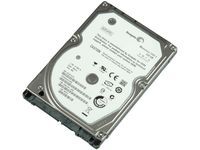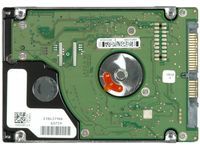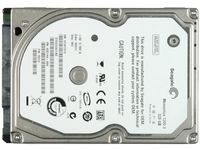Next-Gen 7,200 RPM Notebook Hard Drives
Seagate Momentus 7200.3 ST9320421AS

Seagate has brought its third-generation Momentus high-performance notebook hard drive to market: the Momentus 7200.3. Seagate didn’t offer any 250 GB drives with the Momentus 7200.3, so this represents a significant step forward. Seagate says that “industry-leading 7,200-RPM performance meets the industry’s lowest power consumption levels”. That’s a strong statement that we didn’t want to leave unverified.
High Performance? Check.
The 15.6 ms average access time is a good result, but it doesn’t reach the 14.3 ms of its predecessor, nor the 15.4 ms of WD’s Scorpio Black. The IOMeter I/O benchmark results provide more proof. The new Momentus 7200.3 does well, but it’s not top of the class here.
Still, it does provide better throughput than any other 2.5” drive before: 89 MB/s maximum read transfer rate is a new record; the average throughput is only slightly below 70 MB/s. These are results that match a 2-year old 3.5” hard drive.
The Momentus 7200.3 does well in the PCMark05 Windows XP startup benchmark, although it doesn’t dominate, and it’s second in the file write benchmark.

Model Features? Check.
Seagate offers capacities of 320 GB, 250 GB, 200 GB, 160 GB, 120 GB and 80 GB, all running at 7,200 RPM and using a 16 MB cache memory, as well as SATA/300 with native command queuing.
Stay on the Cutting Edge
Join the experts who read Tom's Hardware for the inside track on enthusiast PC tech news — and have for over 25 years. We'll send breaking news and in-depth reviews of CPUs, GPUs, AI, maker hardware and more straight to your inbox.
Seagate is one out of only two hard drive manufacturers to provide a full five-year warranty, and the Momentus 7200.3 is specified for up to 60°C operating temperature. Both of these specs are only matched by Western Digital.
G-Force Onboard
G-Force doesn’t have anything in common with Nvidia’s GeForce graphics family, although the two sound alike. Rather, it stands for Seagate’s implementation of a drive free fall sensor. Seagate says that the mechanism works within three tenths of a second, which gives you a good impression of the feature: it cannot prevent damage if, for example, you operate such a drive vertically, and overturn it into a horizontal position, or if you drop a notebook onto a table from a short distance. But it will definitely help if you drop the notebook all the way onto the floor.

Low Power? Check.
Seagate claims best-in-class efficiency, and the firm is right about that. The measured 0.95 W idle power is the lowest hard drive idle power we measured for all 7,200 RPM drives. As a matter of fact, only a few 5,400 RPM drives show better results. Once the drive switches into a low power idle state after longer inactivity, we measured 0.78 W, which is as close as we could get to the specified 0.75 W for low power idle, and is a lower power requirement than we measured for the competition.
The results are reflected by our performance per watt tests on a notebook, where we looked at workstation-type I/O performance and streaming read performance. In both cases, the Momentus 7200.3 achieved excellent results.
There is still some room for improvement, though. When only a defined data stream is required (we played a DVD video file), this drive required 1.9 W. Hitachi and Western Digital show that this can be done at much lower power requirements, which eventually can contribute to longer battery life when watching movies.
Current page: Seagate Momentus 7200.3 ST9320421AS
Prev Page Samsung Spinpoint MP2 HM251JJ Next Page Western Digital Scorpio WD3200BEKTMost Popular

